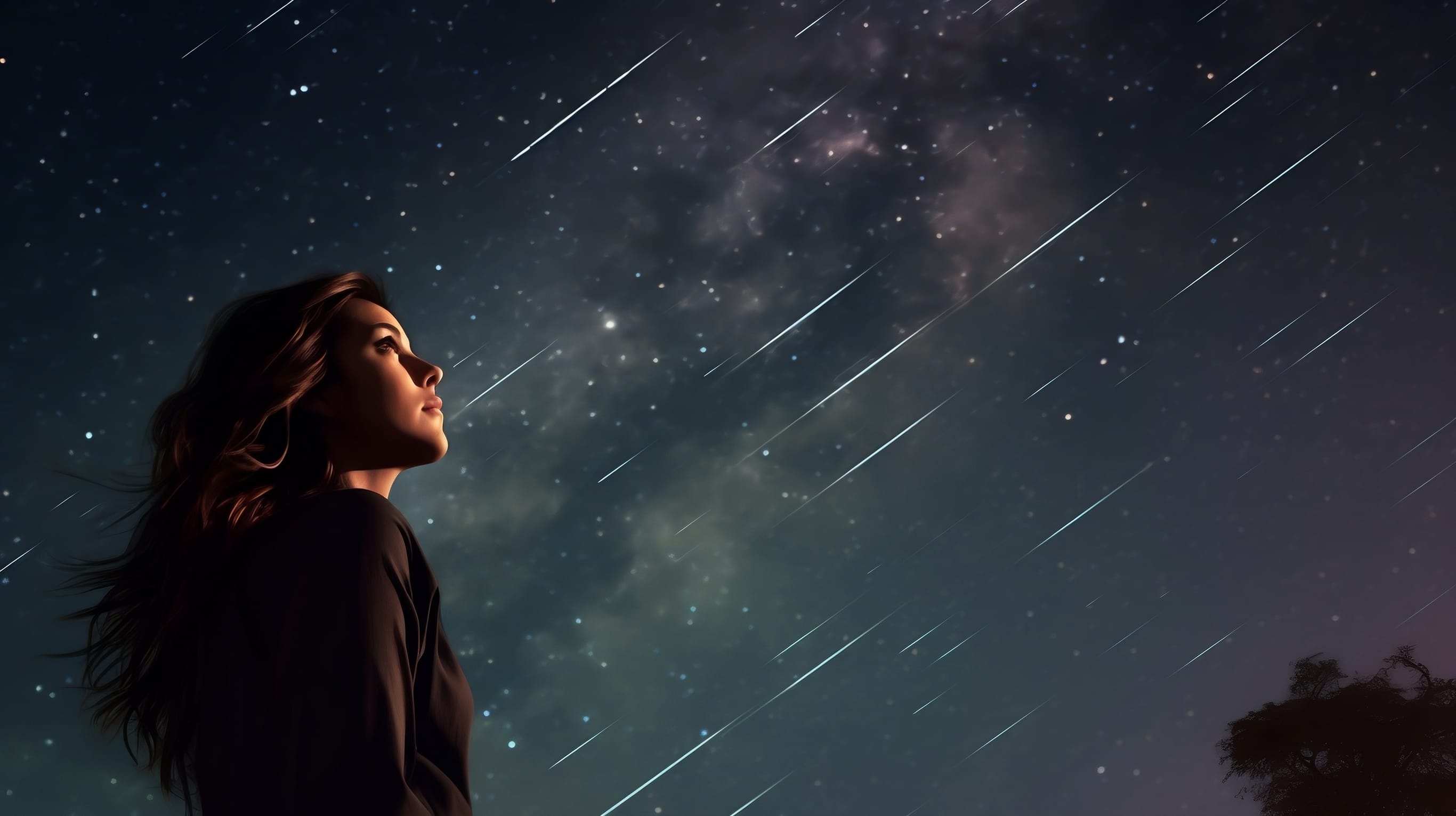Eta Aquariids 2025: Meteor Shower in May 2025
One of the best meteor showers for the Southern Hemisphere, the bright Eta Aquariids, reaches its peak in May. Use the Sky Tonight app to find the best time for viewing these shooting stars, or read on for more details. Find out when to watch Eta Aquariids, what viewing conditions to expect in 2025, and get some useful tips on observing meteors. Let's get started!
Contents
- When is the Eta Aquariid meteor shower?
- What is the Eta Aquariid meteor shower?
- What causes the Eta Aquariids?
- Eta Aquariids 2025: Bottom line
When is the Eta Aquariid meteor shower?
The Eta Aquariids run from April 19 to May 28, with a peak of activity on May 5-6. This meteor shower is best seen from the Southern Hemisphere. Observers located at latitudes up to about 40°N will also be able to see the bright meteors. The Eta Aquariids are visible in the hours before dawn — their radiant culminates at about 8 a.m. local time, leaving only a short observation window between the rise of the radiant and morning twilight.
To find out when the radiant will rise above the horizon for your location, use the Sky Tonight or Star Walk 2 app. Simply open any of the two apps and enter the name of the meteor shower in the search field. Remember — the higher the radiant rises, the more meteors you're likely to see, so look for the time when the radiant reaches its highest point in the sky before the morning sunlight illuminates the sky. For more useful meteor shower viewing tips, have a look at our dedicated infographic.

Viewing Eta Aquariid meteor shower in 2025
According to the International Meteor Organisation (IMO), in 2025, the peak activity of the Eta Aquariids is expected on May 6, at 03:00 GMT, two days after the First Quarter Moon. The 72%-illuminated lunar disc will disappear over the horizon at dawn, so the morning sky will be unaffected by moonlight.
Visual data collected over several years also shows that during the period from May 3 to May 10, there tends to be a higher-than-average rate of visible meteors (more than 30 meteors per hour). You can try monitoring the Eta Aquariids within this time frame, but keep in mind that the Moon will be waxing each day, which may hinder observations.
What is the Eta Aquariid meteor shower?
The Eta Aquariids are known for a high percentage of persistent trains, which provides a spectacular view for observers. It’s usually a very active meteor shower that produces up to 50 meteors per hour, assuming the observation conditions are excellent. In reality, you’re more likely to see around 40 meteors per hour, which is still much more than a usual meteor shower can produce.
All the Eta Aquariids appear to radiate from the point in the constellation Aquarius. This point is called the radiant of the meteor shower and nearly aligns with the faint star Eta Aquarii — hence the name of this meteor shower.
What causes the Eta Aquariids?
Most of the meteor showers come from comets. While traveling in its orbit, a comet leaves lots of particles of dust and rock behind. On its journey around the Sun, the Earth crosses this comet’s orbit each year at around the same time and passes through a bunch of comet debris. When these comet’s remnants enter the Earth’s atmosphere, they create bright streaks in our skies.
The parent comet of the Eta Aquariids is Halley's Comet, officially designated 1P/Halley. Interesting fact: Halley's Comet is a source for two streams at once. This comet’s orbit comes close to Earth's in two places, so it produces a bunch of bright streaks twice a year — the Eta Aquariids in early May and the Orionids in late October.
Learn more about the meteor showers that are peaking this season in our dedicated article. Don't miss out on spectacular stargazing events!
Eta Aquariids 2025: Bottom line
The Eta Aquariid meteor shower is active from April 19 to May 28. In 2025, it will reach its peak on May 6, delivering up to 50 meteors per hour. Use Star Walk 2 or Sky Tonight to learn when and where to see this meteor shower and get up-to-date information about other astronomical events. Also, check how good you are at watching shooting stars by passing the quiz!

Wishing you clear skies and happy observations!
